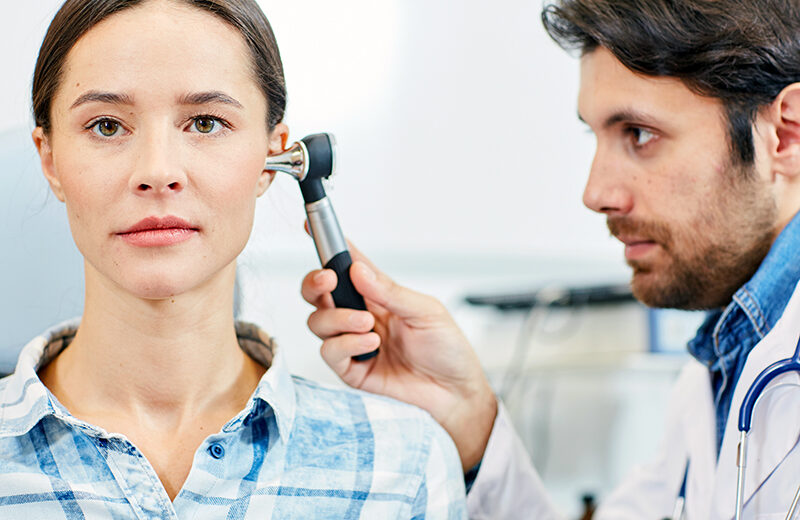The fluid and substances found in the ear have many different characteristics. Healthy normal discharge, like ejected earwax, is usually pale yellow or off-white. Usually, the fluid coming out of your ear is earwax. Discharge from the ear is not necessarily a sign of problems with the ear, a small amount found on your pillow in the morning or after a hot shower is normal. However, excessive amounts or discolored discharge is a sign of issues. Ear discharge can be caused by a rupture in the eardrum from physical trauma, foreign objects, or ear infections anywhere along the ear canal. In rare circumstances, it could begin after a significant injury to the side of the head or skull.
Why Do I have Ear Discharge?
Common Conditions that Result in Abnormal Ear Discharge:
• Infection in the inner or middle ear
• Swimmer’s ear
• Ruptured eardrum
• Foreign objects or a buildup of debris
• Injury to the ear
Symptoms of Ear Discharge:
The discharge characteristics depend on the severity of the underlying condition.
Clear Discharge
Excessive clear fluid could be an indicator of several issues. Clear fluid is expected after swimming or bathing. However, if clear discharge is present after head trauma or a skull fracture, it could be spinal fluid.
White to Yellow Discharge
Pale yellow to white discharge retains the standard color of healthy ear wax, but excessive amounts could indicate issues like ear wax buildup or obstruction in the ear canal.
Green or Dark Discharge
Discolored discharge is a clear sign of infection from bacteria, viruses, or fungus in the ear. Other conditions that narrow the ear canal or create a blockage can trap water and allow microorganisms to grow and thrive, resulting in infection.
The Presence of Blood
Bloody discharge is a serious issue that should be addressed at once. The presence of blood indicates that some physical injury has occurred, such as a ruptured eardrum or torn ear canal.
Treatment Options for Dealing with Ear Discharge:
Dealing with ear discharge depends on the actual cause and the severity of the issue. However, despite the various problems that lead to abnormal ear discharge, treatment options are straightforward. No matter the underlying condition, recommendations will consist of one or a combination of the following treatments.
Cleaning
Cleaning treatments are used to flush the ear canal and eliminate wax buildup, infections, and debris. Clearing the ear canal can also make it easier to observe injury, which is usually the first step in treating ear discharge.
Antibiotics and Medications
Antibiotic and anti-viral medications help to eliminate infections and reduce inflammation. Other medications could also be prescribed to reduce pain and swelling in physical injury cases.
Surgery
The last treatment option is surgery, which is used only in severe cases. Due to the sensitivity of the ear and ear canal tissues, surgery is only used to correct injury, deformities, and abnormal tissue growth found in the ear canal, behind the ear drum, or tissue surrounding the ear.
When You Should See a Doctor:
Since there are many causes for ear discharge, it is easier to describe the symptoms that should send you to seek medical attention. Even though many of the conditions develop over time, almost the same number can show up quickly. Contact us right away if you experience any of the following symptoms:
• Severe pain in or around the ear
• High fever or signs of severe illness
• Bloody discharge, especially after a traumatic injury
• Hearing loss
• Obstruction due to a foreign object





